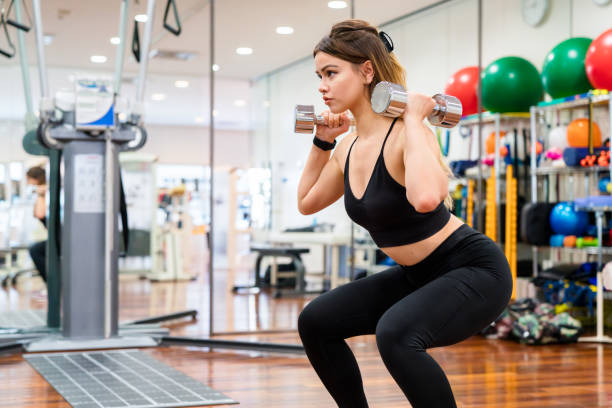If you have attended a yoga class at Planet Fitness, you’ve probably heard of Asian squats.. This traditional way of sitting and squatting is a common practice in many Asian countries, but it’s not just about cultural differences. In fact, there are several benefits to adopting this posture, even if you’re not from an Asian background.
What are Asian Squats?
The Asian squat, also known as the “third world squat,” is a squatting position where you squat down with your feet flat on the ground and your buttocks as close to your heels as possible. This position is typically used for activities such as eating, using the restroom, or even resting in some Asian countries. While it may seem strange or uncomfortable to those who aren’t used to it, it’s actually a very natural position for the human body.
There are many benefits to incorporating Asian squats into your daily routine. First off, it’s an excellent way to stretch out your hips, ankles, and lower back. This can help improve your posture and reduce pain and discomfort in these areas.
Additionally, Asian squats can help improve your digestion by encouraging proper alignment of the digestive organs. Sitting in this position can also help improve circulation and reduce the risk of blood clots in the legs.
How to Do an Asian Squat?
If you’re new to the Asian squat, it may take some practice to get used to it. Here are some tips to help you get started:
- Stand with your feet shoulder-width apart and your toes pointing slightly outward.
- Slowly squat down, keeping your feet flat on the ground and your knees pointing in the same direction as your toes.
- As you squat down, try to keep your back as straight as possible and your chest lifted.
- Once you reach the bottom of the squat, try to relax your hips and buttocks as much as possible.
- You can use your elbows to gently push your knees outwards to deepen the stretch.
- Hold the squat for as long as you can, aiming for at least 30 seconds to start.
Remember, it’s okay if you can’t hold the squat for very long at first. With practice, your body will become more accustomed to the position and you’ll be able to hold it for longer periods of time.
Are Asian Squats in the Genes?
While genetics may play a role in an individual’s ability to perform an Asian squat, it is not solely determined by genetics. Factors such as lifestyle, environment, and daily habits can also influence an individual’s ability to perform an Asian squat comfortably.
For example, in many Asian countries, squatting is a common way of sitting and performing daily tasks, so individuals who grew up in these cultures may be more accustomed to the position. However, with practice and dedication, individuals from all backgrounds can improve their ability to perform an Asian squat.
Moreover, it’s important to note that everyone’s body is different, and some individuals may have anatomical differences or mobility limitations that make it difficult or uncomfortable to perform an Asian squat. In these cases, it’s important to listen to your body and modify the position as needed to avoid discomfort or injury.
Here are some exercises to help you do the Asian squat:
